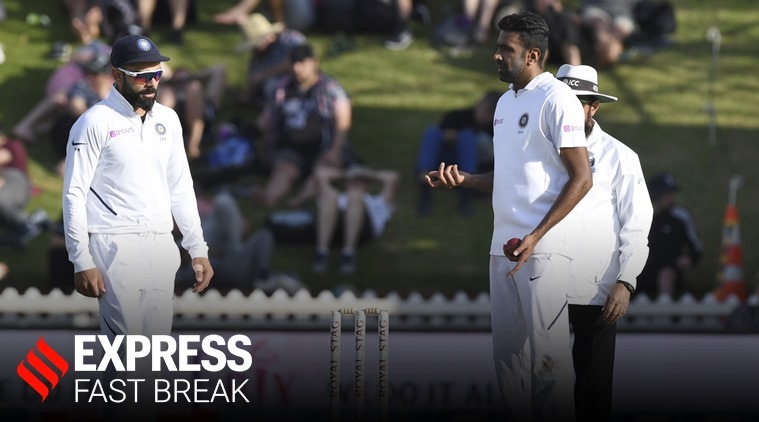 India went down by 10 wickets in the first Test (Source: AP)
India went down by 10 wickets in the first Test (Source: AP)
Any top-ranked team can afford to have one bad day at the office. But India, the No.1 ranked Test team in the world, were thoroughly outplayed by New Zealand in each of the four days at the Basin Reserve. From the tepid displays of his batsmen to the manner in which the two premier fast bowlers in Jasprit Bumrah and Mohammed Shami were rendered ineffective, India captain Virat Kohli will have a lot to ponder about when his sits down to introspect this capitulation. These are genuine causes of concern that’s bound to give Kohli sleepless nights in the lead-up to the second Test match in Christchurch. But the biggest worry was India’s inability to dismiss New Zealand’s doughty lower-order on Day 3. This has been a perennial problem for quite some time now, and like a niggling migraine, it constantly keeps resurfacing, especially on away tours.
On Sunday, New Zealand were struggling at 225/7, and it looked like the visitors would restrict them to a lead of less than 100 runs. But enterprising knocks from Colin de Grandhomme and debutant Kylie Jamieson fuelled their resurgence. Their grand alliance yielded 71 runs in just 96 deliveries. And to add more insult to injury, their spectacular acts were followed up by Trent Boult’s whirlwind 24-ball 38. This not only annoyed the Indian bowlers, but it helped New Zealand’s lead swell to 183 runs, which in context of this match proved to be the difference. Just to illustrate this point further, since 2018, India have been the worst performers in dismissing the lower order (Nos 8-11) in Tests. On an average they have been consuming 101 deliveries to take the last 4 wickets —the highest among all Test-playing nations.
This was a factor even during their ill-fated Test series in England in 2018. Back then, they conceded, on an average, more than 150 runs to England’s lower order. Resultantly, they contributed a windfall, close to 40 per cent of the team’s total runs. Leading England’s charge was a young Sam Curran, who was featuring in only his second series. Batting at No.8, he registered scores of 24, 63, 40, 78, 46, 0 and 21 in the four Tests that he played, all of which left Kohli and his bowlers with more questions than answers.
At the Basin Reserve, India were guilty of bowling the wrong lengths to de Grandhomme and Jamieson. Consider this: to Jamieson, who is a giant at 6 foot and 8 inches, India’s pacers employed the short-pitched stuff. On a benign track, the deliveries were sitting up at a comfortable height to the 25-year-old. He just chose to sit back at the crease and swat the insipid offerings with absolute glee, smoking four sixes in his 44-ball 45. India would have been better served had they employed the fullish, yorker length to Jamieson. To de Grandhomme, they hardly bowled any short-pitched stuff, and instead relied on conventional lines and lengths, which were well negotiated by the all-rounder. Such faulty plans to the lower order proved to be India’s bane.
Kohli’s juggernaut didn’t lose a single Test in 2019. Now, in the first match of 2020, they have come crashing down to a soul-crushing defeat. Cricket can be a great leveller.